Narriearra Caryapundy Swamp National Park
Learn more
Learn more about why this park is special
Narriearra Caryapundy Swamp National Park is a special place. Here are just some of the reasons why:
Home to over 500 species
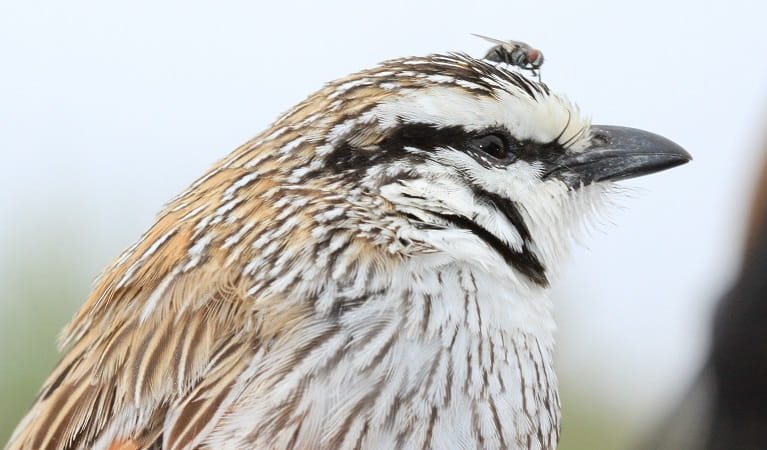
Although at first glance the outback may look like a barren landscape, you’ll find that this isn’t the case in Narriearra Caryapundy Swamp National Park. Numerous endangered and threatened species live here, and some are found nowhere else in NSW. From the scurrying bearded dragon to a soaring wedge-tailed eagle, there are around 540 species recorded in the park (not including plant species). You may even be lucky enough to spot the endangered grey grasswren (pictured) flitting through the lignum surrounding Bartons tank bird hide.
- Caryapundy lookout loop drive If you’re staying in Tibooburra and only have time for a day drive, try this return drive through Narriearra. Bring a picnic and set out on your journey through this extraordinary outback national par...
- Caryapundy tank bird hide If you’re a keen birdwatcher, don’t miss a visit to Caryapundy tank bird hide in Narriearra Caryapundy Swamp National Park, near Tibooburra. It’s a great place to see some amazing bird species.
The drovers' hotel
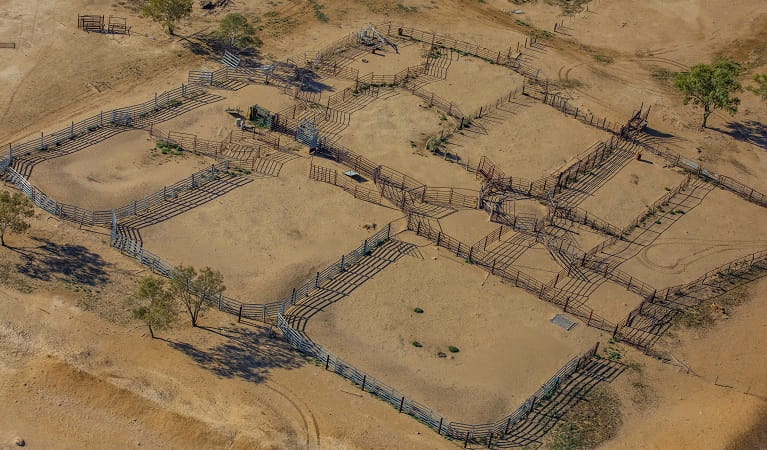
Whittabrinnah Hotel was once a bustling place where drovers stopped by on their way through the Adelaide Gate to the markets at Broken Hill and Adelaide. The hotel stood for around 25 years until it burnt down in the early 1890s, and was never rebuilt. You can still see the remaining stone material from the hotel’s buildings, hearths and foundations, and the stockyard across the road. There’s also galvanised iron material amongst a scatter of glass bottles and ceramic jars from daily life at the hotel. The heritage values of these objects are defined by the connection they have with the Whittabrinnah Hotel, so please don’t remove them from this location.
- Caryapundy lookout loop drive If you’re staying in Tibooburra and only have time for a day drive, try this return drive through Narriearra. Bring a picnic and set out on your journey through this extraordinary outback national par...
- Whittabrinnah heritage walk Step back in time when you do this short walk in Narriearra Carapundy Swamp National Park, near Tibooburra. It's an easy stroll around the Whittabrinnah Hotel ruins and great for all ages.
Plants and animals protected in this park
Animals
-
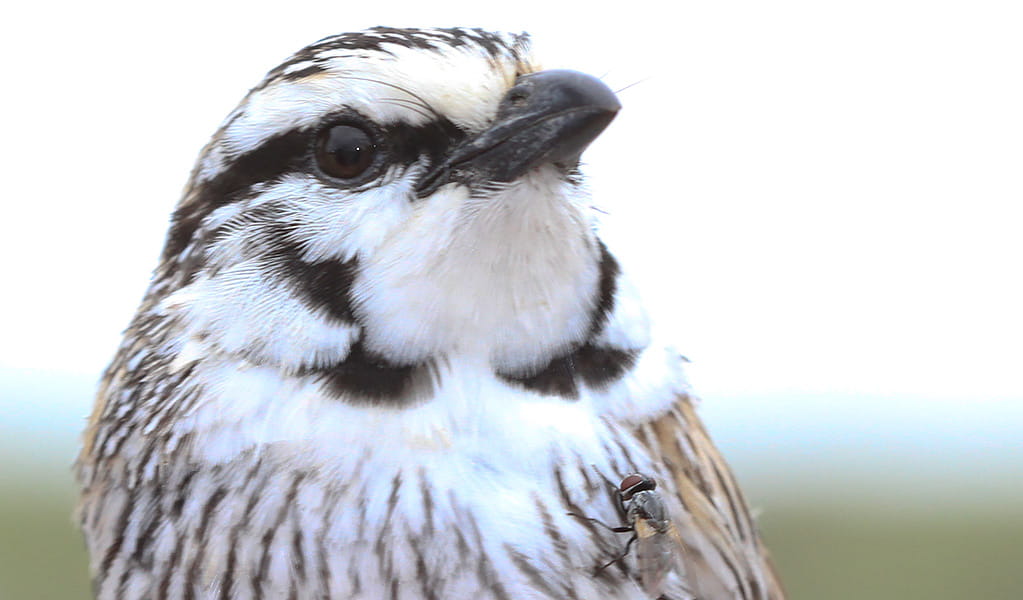
Grey grasswren (Amytornis barbatus barbatus)
The endangered grey grasswren (Bulloo subspecies) lives in the semi-arid floodplains of far western NSW and Queensland. Around 90 percent of this rare bird's NSW habitat is protected within Narriearra Caryapundy Swamp National Park.
-
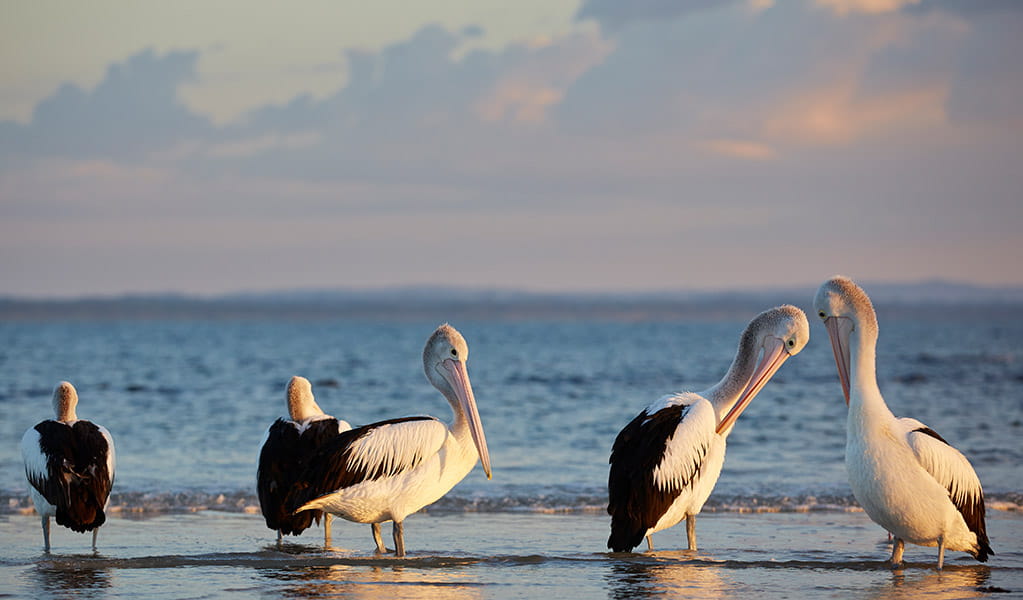
Australian pelican (Pelecanus conspicillatus)
The curious pelican is Australia’s largest flying bird and has the longest bill of any bird in the world. These Australian birds are found throughout Australian waterways and the pelican uses its throat pouch to trawl for fish. Pelicans breed all year round, congregating in large colonies on secluded beaches and islands.
-
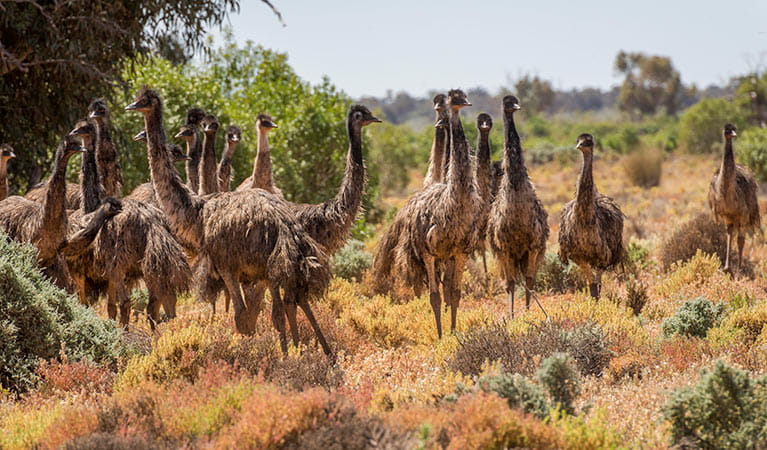
Emu (Dromaius novaehollandiae)
The largest of Australian birds, the emu stands up to 2m high and is the second largest bird in the world, after the ostrich. Emus live in pairs or family groups. The male emu incubates and rears the young, which will stay with the adult emus for up to 2 years.
-
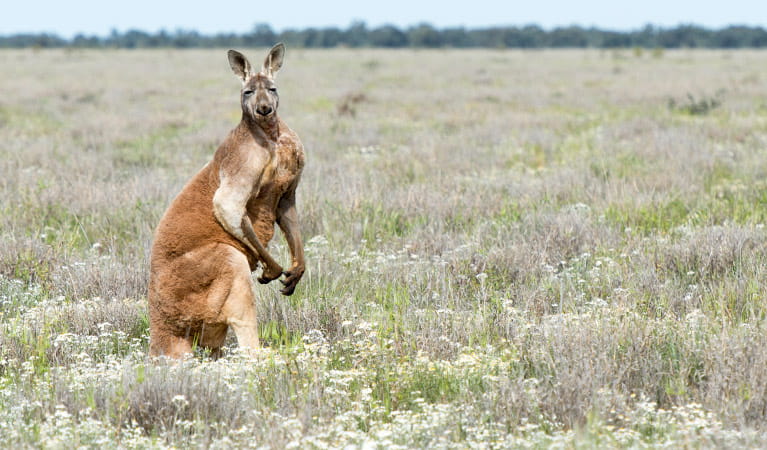
Red kangaroo (Macropus rufus)
The red kangaroo is one of the most iconic Australian animals and the largest marsupial in the world. Large males have reddish fur and can reach a height of 2m, while females are considerably smaller and have blue-grey fur. Red kangaroos are herbivores and mainly eat grass.
-
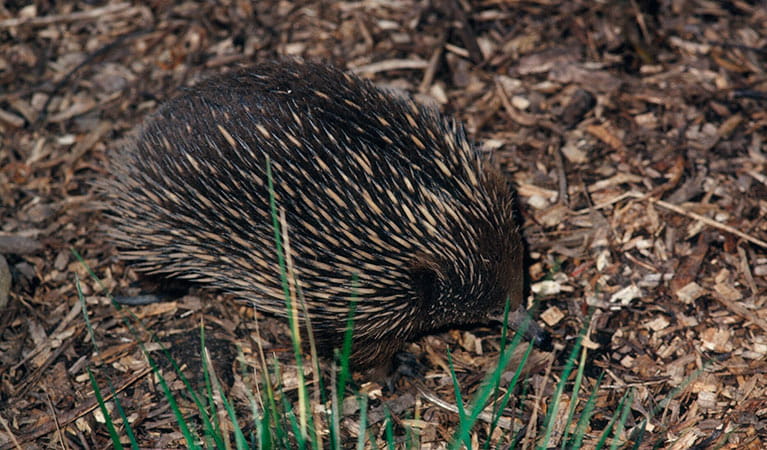
Short-beaked echidna (Tachyglossus aculeatus)
One of only 2 egg-laying mammals in the world, the short-beaked echidna is one of the most widespread of Australian native animals. Covered in spines, or quills, they’re equipped with a keen sense of smell and a tube-like snout which they use to break apart termite mounds in search of ants.
-
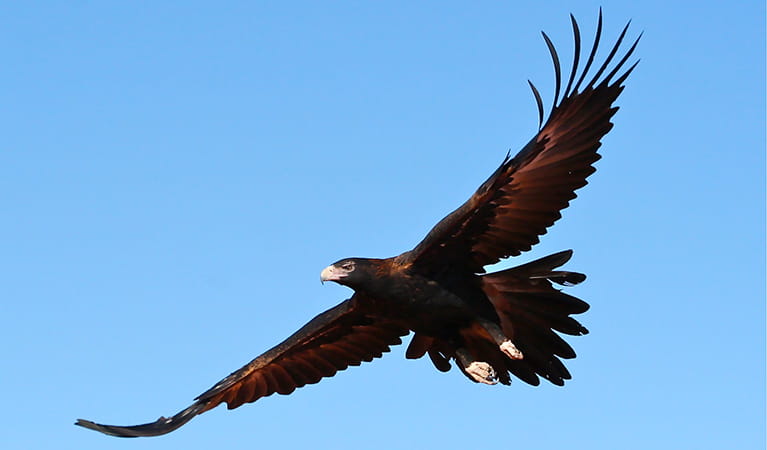
Wedge-tailed eagle (Aquila audax)
With a wingspan of up to 2.5m, the wedge-tailed eagle is Australia’s largest bird of prey. These Australian animals are found in woodlands across NSW, and have the ability to soar to heights of over 2km. If you’re bird watching, look out for the distinctive diamond-shaped tail of the eagle.
Plants
-
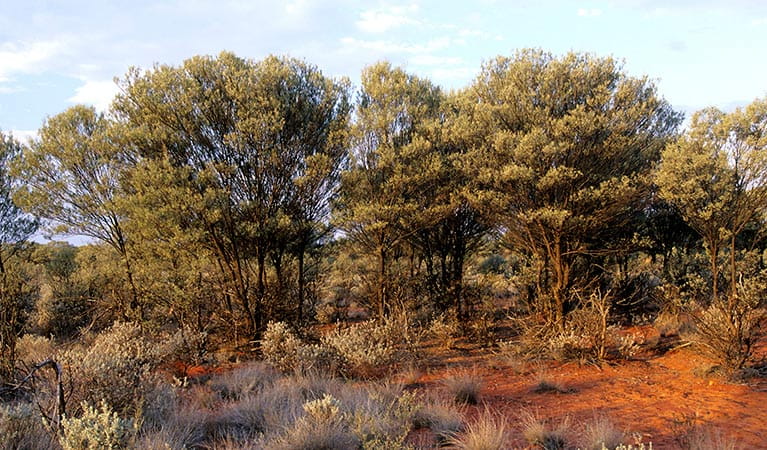
Mulga (Acacia aneura)
Mulga are hardy Australian native plants found throughout inland Australia. With an unusually long tap root, the mulga is able to withstand long periods of drought.
-
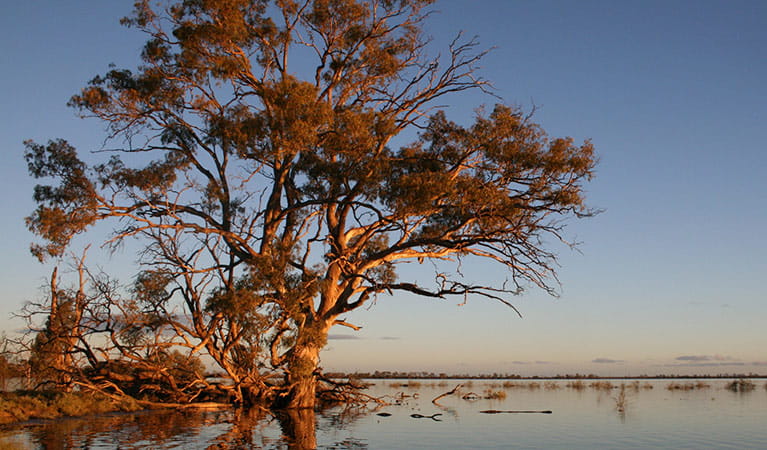
River red gum (Eucalpytus camaldulensis)
Australian native plants, majestic river red gum trees are widespread across Australian inland river systems. The river red gum is a dominant tree species of the Murray-Darling basin which spans NSW, Queensland and Victoria. This iconic native eucalypt grows to a height of 30m and is thought to have a lifespan up to 500-1000 years.
-
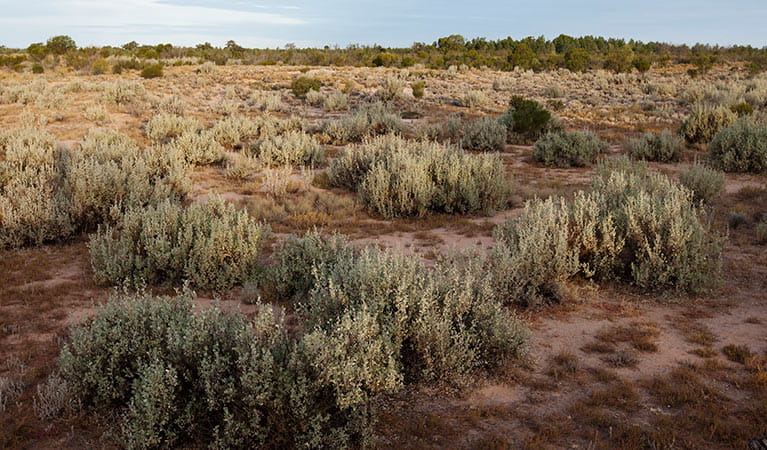
Saltbush (Atriplex nummularia)
A hardy Australian native plant, the saltbush is a small spreading shrub that can withstand dry salty soils such as those found in the desert plains of western NSW. It is grey-white in colour and has small spear-shaped succulent leaves. It flowers from December to April.
Look out for...
Saltbush
Atriplex nummularia
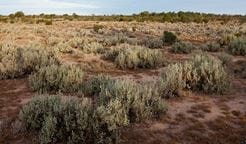
A hardy Australian native plant, the saltbush is a small spreading shrub that can withstand dry salty soils such as those found in the desert plains of western NSW. It is grey-white in colour and has small spear-shaped succulent leaves. It flowers from December to April.
Environments in this park
- Desert and arid shrubland environments
- Grassland environments
- Wetland environments
- Woodland environments